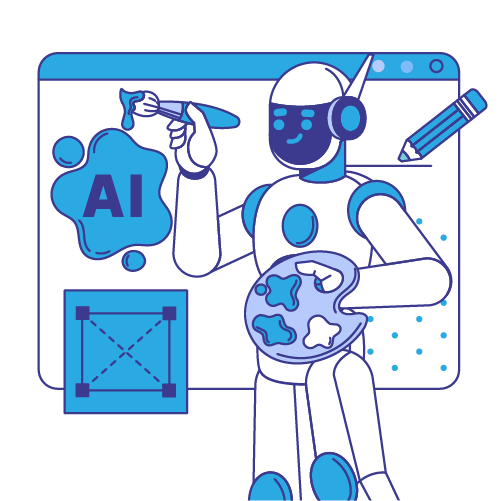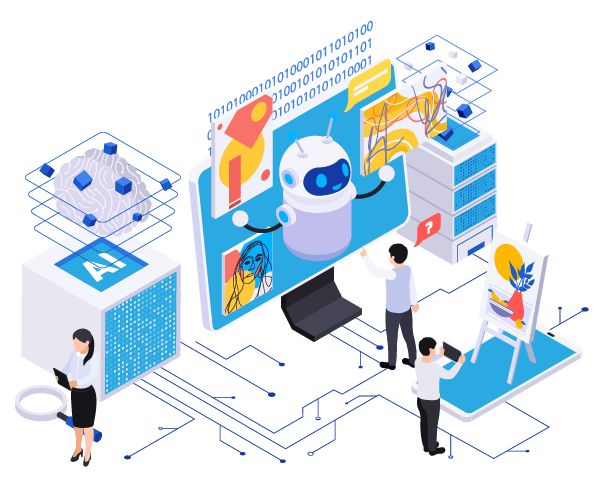In today’s world, the push for sustainability is more pressing than ever. With the ongoing climate crisis and the need for sustainable development, businesses, governments, and individuals are seeking innovative solutions to reduce their environmental footprint. Among these solutions, Artificial Intelligence (AI) has emerged as a powerful tool to drive sustainability efforts across various sectors. This blog post explores how AI and sustainability intersect, highlighting the role of Green AI technology, sustainable AI solutions, and AI for environmental protection.
The Intersection of AI and Sustainability
AI, with its ability to process vast amounts of data and make intelligent decisions, has the potential to revolutionize how we approach sustainability. By leveraging AI, we can enhance our understanding of complex environmental systems, optimize resource usage, and develop innovative solutions to mitigate environmental impact.
Green AI Technology
Green AI technology refers to the development and deployment of AI systems designed to minimize their environmental impact. Traditional AI systems can be resource-intensive, consuming significant amounts of energy and generating considerable carbon emissions. Green AI technology aims to address these issues through several approaches:
- Energy-Efficient Algorithms: Researchers are developing AI algorithms that require less computational power, thereby reducing energy consumption. These algorithms are designed to perform complex tasks efficiently without compromising on accuracy or performance.
- Optimized Data Centers: Data centers, which house the infrastructure for AI systems, are notorious for their high energy usage. Green AI technology focuses on optimizing data center operations, utilizing renewable energy sources, and implementing energy-efficient cooling solutions to reduce their environmental footprint.
- Lifecycle Management: The lifecycle of AI hardware, from manufacturing to disposal, has environmental implications. Green AI technology promotes the use of sustainable materials, recycling, and responsible disposal practices to minimize waste and reduce the overall environmental impact.
Sustainable AI Solutions
AI-driven solutions are being applied across various industries to promote sustainability. These sustainable AI solutions can drive efficiency, reduce waste, and enhance resource management in ways that were previously unimaginable. Here are some key applications:
1. Energy Management
AI is transforming the energy sector by optimizing energy production, distribution, and consumption. Smart grids powered by AI can predict energy demand, balance loads, and integrate renewable energy sources more effectively. For instance, AI can forecast solar and wind energy production, allowing grid operators to plan for fluctuations and reduce reliance on fossil fuels.
AI also plays a crucial role in energy efficiency. Machine learning algorithms can analyze energy consumption patterns in buildings, identifying opportunities for energy savings and automating energy management systems. This results in reduced energy waste and lower carbon emissions.
2. Agriculture and Food Production
Sustainable agriculture is essential for feeding a growing global population while preserving natural resources. AI is revolutionizing agriculture by enabling precision farming techniques. By analyzing data from sensors, drones, and satellite imagery, AI can provide insights into soil health, crop growth, and pest infestations.
Farmers can use this information to make informed decisions about irrigation, fertilization, and pest control, reducing the use of water, chemicals, and other inputs. This not only increases crop yields but also minimizes environmental impact.
3. Water Management
Water scarcity is a critical issue in many parts of the world. AI-powered systems can optimize water management by predicting water demand, monitoring water quality, and detecting leaks in distribution networks. For example, AI can analyze data from sensors placed in water infrastructure to identify leaks and inefficiencies, allowing for timely repairs and reducing water loss.
Additionally, AI can assist in managing water resources for agriculture. By analyzing weather patterns and soil moisture levels, AI can help farmers optimize irrigation schedules, ensuring that crops receive the right amount of water at the right time.
4. Waste Management
Effective waste management is crucial for reducing pollution and conserving resources. AI is being used to improve waste sorting and recycling processes. Computer vision systems powered by AI can identify and sort different types of waste materials, increasing the efficiency of recycling operations.
Furthermore, AI can optimize waste collection routes, reducing fuel consumption and emissions from waste collection vehicles. Predictive analytics can also forecast waste generation patterns, enabling better planning and resource allocation for waste management services.
5. Climate Change Mitigation
AI is playing a pivotal role in climate change mitigation efforts. Climate modeling and simulation powered by AI can provide more accurate predictions of climate patterns, helping policymakers and scientists develop effective strategies to combat climate change.
AI can also assist in monitoring and managing carbon emissions. By analyzing data from various sources, AI can identify emission hotspots, track progress toward emission reduction targets, and suggest measures to reduce emissions. For example, AI can optimize industrial processes to minimize energy consumption and reduce greenhouse gas emissions.
AI for Environmental Protection
Beyond promoting sustainability in various sectors, AI is also being leveraged for direct environmental protection efforts. Here are some notable applications:
1. Biodiversity Conservation
AI is aiding conservationists in monitoring and protecting biodiversity. By analyzing data from camera traps, drones, and satellite imagery, AI can identify and track wildlife populations, monitor habitat changes, and detect illegal activities such as poaching and deforestation.
AI-powered systems can also analyze acoustic data to monitor bird and marine mammal populations. This provides valuable insights into species behavior and helps in the development of conservation strategies.
2. Disaster Management
AI is enhancing disaster management efforts by improving prediction, response, and recovery. Machine learning algorithms can analyze historical data and real-time information to predict the occurrence of natural disasters such as hurricanes, earthquakes, and floods.
During disasters, AI can assist in coordinating response efforts by analyzing data from social media, emergency calls, and sensor networks. This helps in identifying affected areas, allocating resources, and providing timely assistance to those in need.
3. Air Quality Monitoring
Air pollution is a significant environmental and public health concern. AI-powered systems can monitor air quality in real time, analyzing data from sensors and satellites to identify pollution sources and track pollution levels.
AI can also predict air quality trends and provide early warnings of hazardous conditions. This information is crucial for policymakers, businesses, and individuals to take proactive measures to reduce air pollution and protect public health.

The Future of AI and Sustainability
As AI technology continues to advance, its potential to drive sustainability efforts will only grow. Here are some emerging trends and future possibilities:
- AI-Driven Circular Economy: AI can facilitate the transition to a circular economy by optimizing resource use, promoting recycling, and minimizing waste. AI-powered platforms can match surplus materials with manufacturers, enabling the reuse of materials and reducing the need for new resources.
- AI in Sustainable Transportation: AI is set to revolutionize transportation by enabling autonomous vehicles, optimizing traffic management, and promoting the use of electric vehicles. AI can optimize routes for public transportation, reducing fuel consumption and emissions.
- AI and Sustainable Finance: AI can assist in sustainable finance by analyzing environmental, social, and governance (ESG) data to assess the sustainability performance of companies. This can help investors make informed decisions and promote sustainable business practices.
- AI for Climate Resilience: AI can enhance climate resilience by providing early warnings of extreme weather events, optimizing infrastructure design, and supporting climate adaptation strategies. AI can also assist in managing natural resources to ensure their sustainable use in the face of climate change.
Conclusion
The synergy between AI and sustainability holds immense promise for a greener future. Green AI technology, sustainable AI solutions, and AI for environmental protection are transforming how we approach sustainability challenges. By harnessing the power of AI, we can optimize resource use, reduce waste, and mitigate environmental impact across various sectors.
As we move forward, it is essential to continue investing in AI research and development, promoting the adoption of sustainable practices, and fostering collaboration between stakeholders. With AI as a key enabler, we can build a sustainable future that benefits both people and the planet.
If you are looking for an experienced IT provider, H&L Consulting is the best option. With years of experience, we specialize in mobile app development, web app development, staff augmentation, and robot process automation. Our staff of over 30 highly qualified IT consultants and developers can handle projects of any scale. We are committed to supporting your goals after successfully delivering over 50 solutions to clients throughout the world. Contact us for a full discussion, knowing that H&L Consulting is prepared to fulfill all your IT demands with specialized, effective solutions.










